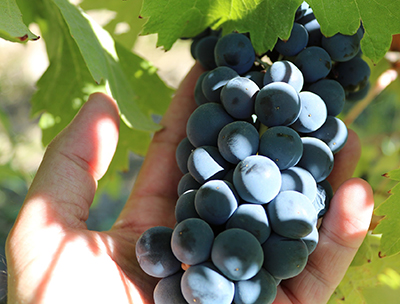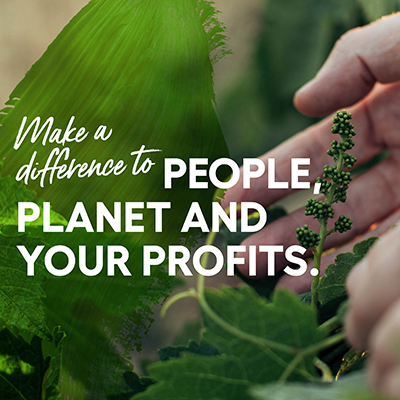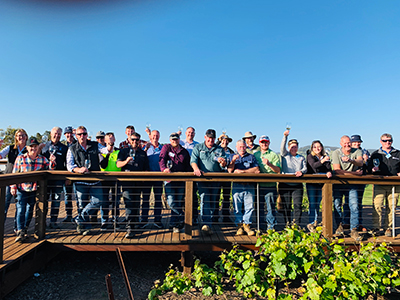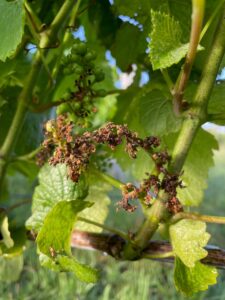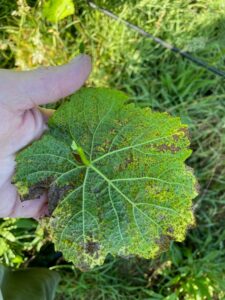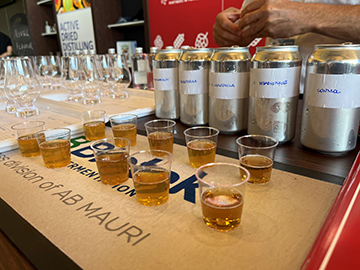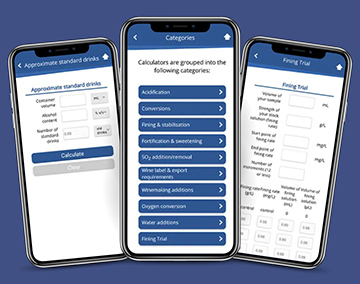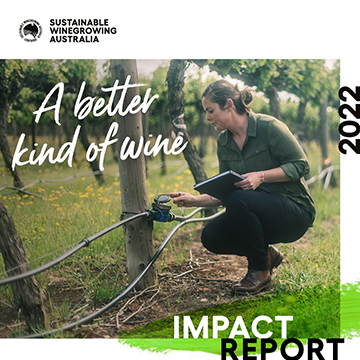22 June 2023
This agrochemical update summarises the major changes in the 2023/24 ‘Dog book’ compared with the previous version. The new edition will be available in hard copy from 19 July 2023. An electronic copy is available now, reflecting the information below and the recommendations for the coming season. The CropLife Resistance management strategies for fungicides will be updated in July. Until then, the current strategies have been retained from the 2022/23 edition.
New active constituents
The following active constituents are registered for use in wine-grape production by the Australian Pesticides and Veterinary Medicines Authority (APVMA) and are listed in the ‘Dog book’ for the first time:
AMISULBRON
APVMA 88958: Amishield is a Nufarm Australia Ltd product registered for control of downy mildew in vineyards. It is an activity group 21 fungicide. This product must be tank mixed with Nufarm Tri-Base Blue.
Recommended restriction on use (withholding period) for grapes destined for export wine: Use no later than E-L 31, berries pea-size (not > 7 mm diameter).
CYFLUMETOFEN
APVMA 89701: Danisaraba Miticide is a BASF product registered for control of two-spotted mite in vineyards.
Danisaraba Miticide is not recommended for use in wine-grapes because its impact on fermentation and wine sensory properties has not been assessed.
FLAZASULFURON
APVMA 90560: Katana 250 WG is an AgNova Technologies Pty Ltd product registered for control of various grasses and broadleaf weeds in vineyards. It is an activity group 2 herbicide.
Recommended restriction on use (withholding period) for grapes destined for export wine: Not required when used as directed. The label withholding period ‘Do not harvest for 11 weeks after application’ must be followed.
FLUOXAPIPROLIN
APVMA 89997: Xivana Prime 20 SC is a Bayer Crop Science product registered for control of downy mildew in grapevines. It is an activity group 49 fungicide.
Recommended restriction on use (withholding period) for grapes destined for export wine: Use no later than E-L 31, berries pea-size (not > 7 mm diameter).
PYRIPROXYFEN
APVMA 65967: Distance Plus Ant Bait is a Sumitomo product and is registered for control of ants in agricultural situations. It is an activity group 7C insecticide.
Recommended restriction on use (withholding period) for grapes destined for export wine: Not required when used as directed. Ensure bait is placed in the inter-row area to avoid lodgement in the plant foliage.
Removed active constituents
GLYPHOSATE POTASSIUM SALT + IPA
Glyphosate potassium salt + ipa has been removed from the ‘Dog book’ because Weedmaster Argo has not been commercially available for two seasons. Weedmaster Argo is still registered for use by the APVMA and stock on hand can be used according to label directions and with regard to winery restrictions.
Changes to herbicide activity group classification
The alphabetical classification for herbicide activity groups is being replaced by a numerical system. There will be a transition period during which herbicide labels will exist in the supply chain, some bearing the legacy alphabetical classifications, and others transitioned to the global numerical system. Both systems will be displayed in the ‘Dog book’ until 2024/25 when the new classification system will be fully implemented.
Request a hard copy
To request a copy of the new ‘Dog book’ once it is available, please provide your contact details to the AWRI at http://www.awri.com.au/dog-book. If you have previously registered to receive a‘Dog book’, it is not necessary to register again.
For more information, please contact Marcel Essling on 08 8313 6600 or email helpdesk@awri.com.au.
This information is provided to inform the Australian grape and wine sector and should not be interpreted as an endorsement of any product.



